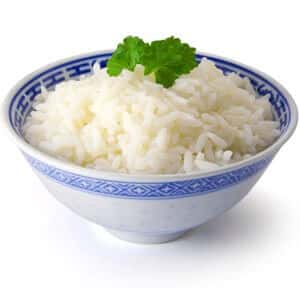
Consumer Reports (CR, November 2012) has ignited a firestorm of controversy with its report “Arsenic in Your Food.” Testing by this consumer organization reveals that there is arsenic “in more than 60 rices and rice products.” This follows on the heels of a January CR investigation, “Arsenic in Your Juice.” Like the new report, that too stirred up a hornet’s nest.
What is going on? Well, it turns out that the FDA has been surprisingly lax when it comes to arsenic. You would think the agency would limit the amount of a potentially cancer-causing substance such as inorganic arsenic in our food and juice. At this point, however, there is no federal maximum limit for arsenic in our food. Partly as a response to the CR investigation, three members of Congress have introduced a bill (the R.I.C.E Act: Reducing food-based Inorganic and organic Compounds Exposure Act) that would oblige the FDA to set such a limit.
For us, the biggest worry comes from the amount of arsenic found in baby cereal made from rice. CR found that even organic baby cereal had arsenic in it. Considering an infant’s small size and how much of her caloric intake might come from rice cereal, she might have a disproportionately high exposure to this toxin.
The WhiteOut campaign to limit the amount of rice pablum babies are fed while being weaned makes even more sense in light of this new information. But parents shouldn’t be complacent if they switch to brown rice. Inorganic arsenic gets concentrated in the outer layer of the rice grain that is retained in brown rice. All things being equal, brown rice may have even more arsenic in it than white rice, so it makes the most sense not to rely too heavily on any type of rice as baby’s first solid food, at least until the FDA sets some safety limits. CR suggests no more than one serving a day, and the authors recommend against letting children drink rice milk.
Arsenic in rice also poses a problem for people with celiac disease. Because they must avoid wheat, barley and rye, and often steer clear of oats as well because of cross-contamination, rice and corn are the primary grains in their diet. If people follow the CR recommendations of limiting rice to two servings a week, that cuts down quite a bit on the menu options for a person with celiac disease. Conversely, it may mean that folks with celiac disease are being exposed to higher levels of arsenic in their diets, along with those (like many Asian or Hispanic families) whose at-home menu preferences are usually based on rice.
Where does the arsenic in rice come from? Although some arsenic comes from the soil and is readily taken up by rice plants grown in flooded conditions, arsenic is also a legacy of past agricultural use of arsenic-based insecticides. Although they are banned now, these were used heavily in cotton-growing regions of Texas, Mississippi, Missouri and Louisiana, where a lot of American rice is grown. In general, rice from these areas is higher in arsenic than rice grown in California. Some arsenic also comes from fertilizers based on chicken manure. Some chickens get arsenic-containing compounds as drugs or in their feed to boost growth and limit intestinal parasites. Unfortunately, fertilizer made from their waste adds to the arsenic burden of the rice crop on which it is used.
What can we do to protect ourselves and our families? If you agree that federal limits on arsenic in food, including rice, you might encourage your Congressional representative to support the R.I.C.E. Act. In the meantime, you might follow the FDA’s advice to eat a wide variety of grains, or pay attention to CR’s recommendations to limit the amount of rice, rice cereal, rice beverages and rice pasta, crackers or cakes. Join the WhiteOut Movement organized by pediatrician Alan Greene at www.DrGreene.com.
When you do serve rice to adults, rinse it well first, as that may remove some portion of the arsenic. Then cook it with extra water and drain off the excess. This will wreak havoc with traditional recipes such as risotto, but it can minimize the exposure to this risky chemical.

